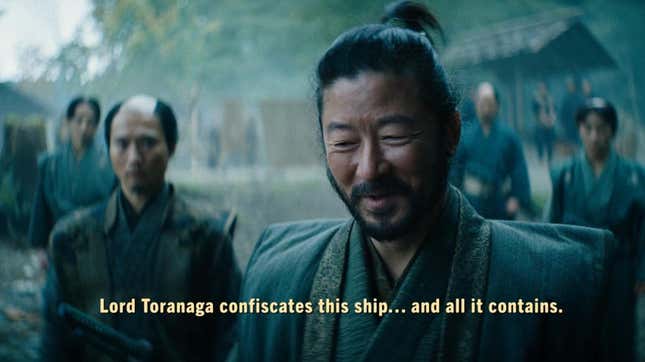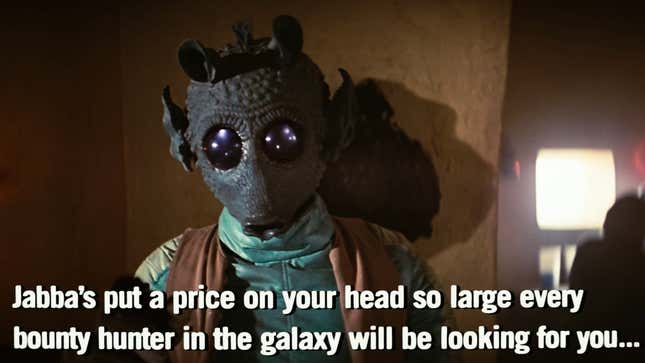Shōgun is perhaps about as far away from science fiction as you can get. The incredible FX series is about examining the political power plays of 17th century Japan, and the cross of cultures as other nations begin finding their way to the East. But given Star Wars’ own long relationship with Japanese media and culture, it’s perhaps a little fitting that this time it’s the one providing the influence.
Of course, Shōgun isn’t going to suddenly have an Ithorian wandering around in the background, or have a CG facsimile of Luke Skywalker show up and chat with Hiroyuki Sanada like it’s a particularly bad episode of The Book of Boba Fett. No, its Star Wars inspiration is much more obscure, and yet you see it in every single episode of the series, almost in every other scene: the font of its subtitles.
“‘Let’s look to science fiction,’” co-showrunner Justin Marks recently told Polygon about the show’s approach to its subtitle design. “And there was a font in the original 1977 Star Wars that was used for a couple of lines, and we found this font… that seemed vaguely similar enough to it, which was also large enough to be read—which was probably what Lucas’ intent was, to make sure it could be read by young Europeans. So it just felt more inviting.”

Marks is referring to the infamously edited-and-re-edited scene from A New Hope, where the hapless bounty hunter Greedo confronts Han Solo in the Cantina after he’s just secured his mission with Luke and Obi-Wan. It’s one of the rare moments in the film series we actually get subtitled, alien dialogue—but the retro, yet clear font apparently gave Shōgun exactly what it needed.

Given the nature of its story and setting, subtitling is a huge aspect of Shōgun—and given that there is still a perceived barrier for a lot of audiences when it comes to primarily subtitled content, everything about its choices in presenting them had to be precise. From coloration and positioning on the screen, to careful editing to ensure certain lines were laid over particular moments of a performance to land right, to yes, the font: everything had to be considered in order to make a series that is, for the most part, in Japanese, engaging to audiences that wouldn’t otherwise check out foreign language media. Given the huge reaction to the series, it seems to have worked—and sneakily whisked people away back to the galaxy far, far away, even if they haven’t noticed it.
Want more io9 news? Check out when to expect the latest Marvel, Star Wars, and Star Trek releases, what’s next for the DC Universe on film and TV, and everything you need to know about the future of Doctor Who.





















+ There are no comments
Add yours